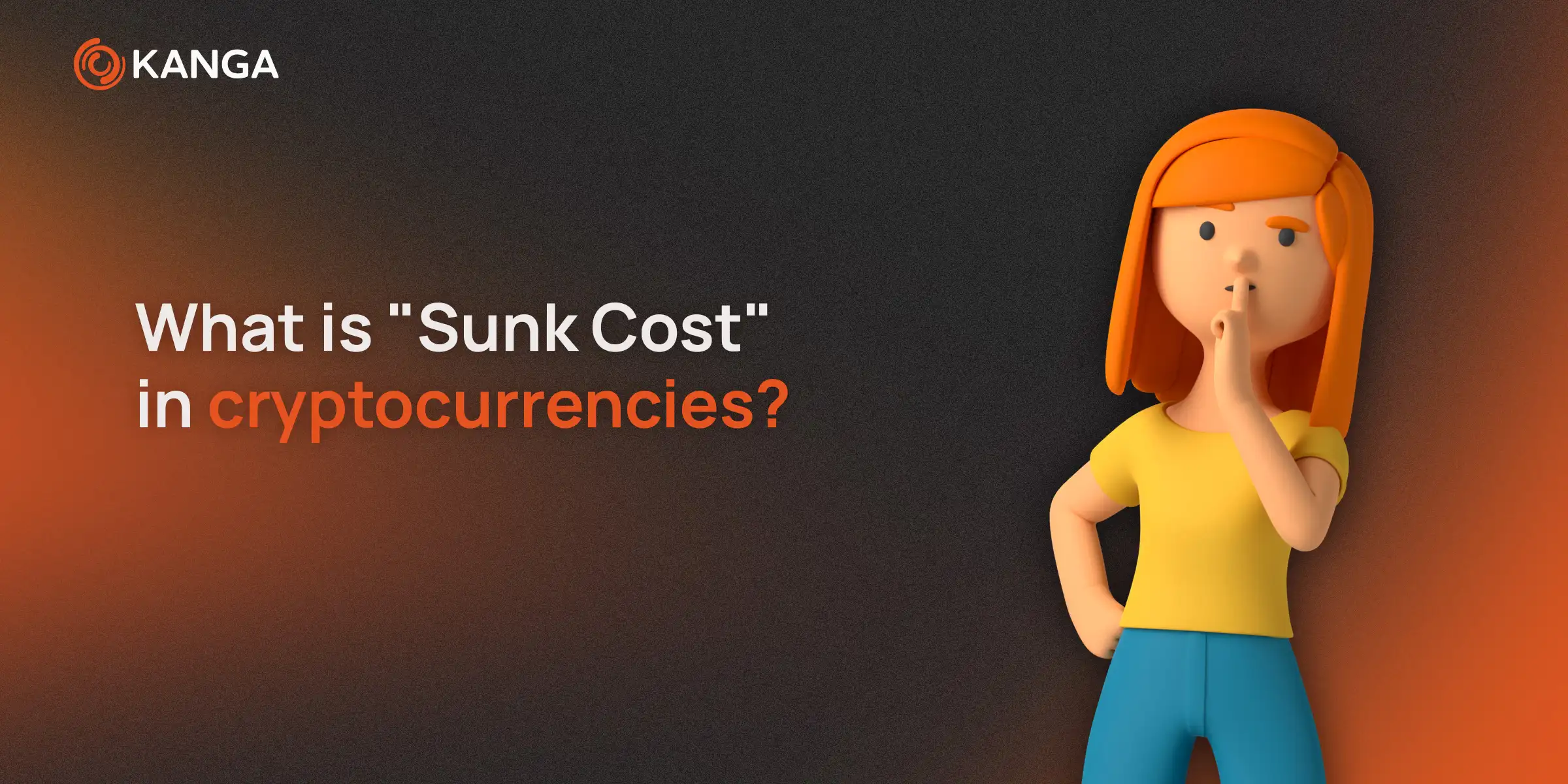"Sunk Cost" Phenomenon in Investments: Why It's Hard to Admit Mistakes

Written by
Kanga
Published on
In the dynamic investing arena of the cryptocurrency world, every move can be both crucial and risky. Investors are faced daily with challenges and decisions that can bring significant gains or unexpected losses. In this environment, full of uncertainty and rapid changes, one of the most fascinating and at the same time deceptive phenomena in investment psychology appears – the “sunk cost” phenomenon.
This phenomenon plays a key role in the decision-making process of investors, especially when they have to face admitting mistakes and withdrawing from unsuccessful investments. Understanding this phenomenon is critical for effective portfolio management and making decisions that are not only rational but also healthy for a long-term investment strategy.
What Is the “Sunk Cost” Phenomenon?
The term “sunk cost” refers to costs that have already been incurred and cannot be recovered. In the context of investments, it’s about the funds invested in a project, action, or asset that does not bring expected profits or even generates losses. The key issue in the “sunk cost” phenomenon is the emotional and psychological attachment of the investor to their previous investment decisions. This emotional bond can lead to the continuation of an investment, even when rational analyses and market indicators point to its inefficiency.
This phenomenon is especially common in environments with high volatility, such as the cryptocurrency market, where rapid price fluctuations can lead to intense emotional reactions and hinder objective assessment of the situation. Understanding the dynamics of “sunk cost” requires investors to have not only economic knowledge but also a deep understanding of their own motivations, emotions, and behaviors that can influence their investment decisions.
Why Do Investors Continue with Unsuccessful Investments?
Emotional Attachment
Investors often develop a deep emotional attachment to their investments. This is particularly true when they have devoted a significant amount of time and energy to them, and even identify with them on a personal level. Such a state makes admitting mistakes and accepting losses not only difficult but also painful. This attachment can lead to the irrational belief that “things will turn around,” which often hinders the making of rational decisions to pull out.
Optimism and Hope
Excessive optimism is another factor that can lead investors to continue with unsuccessful investments. The belief that the market will eventually turn around and that current losses are only temporary can lead to ignoring clear signals that it’s time to change strategies. This “investment hope” is often based on emotions rather than a thorough market analysis, which can lead to prolonged maintenance of unfavorable positions.
Confirmation Bias
Investors, grappling with decisions about their investments, often succumb to confirmation bias. This involves focusing only on the information that confirms their initial assumptions or beliefs, while simultaneously ignoring those that contradict them. Such selectivity in processing information can lead to a loss of an objective view of the investment and prevent a realistic assessment of the situation.
Fear of Loss
Another significant factor is the fear of losing already invested funds. This fear of actual loss can lead investors to make risky or unwise decisions in the hope of recovering at least part of the investment. Paradoxically, this way of thinking often leads to even greater losses.
Lack of Preparedness for Failure
Many entering the investment world are not adequately prepared for the possibility of failure. A lack of risk management planning and exit strategies are common mistakes that lead to the sustenance of unsuccessful investments. Understanding that every investment carries the risk of loss is a key element of responsible investing.
How to Manage the “Sunk Cost” Phenomenon?
Objective Evaluation
The key to managing the “sunk cost” phenomenon is an objective evaluation of investments. This requires regular reviews of the investment portfolio and making decisions based on reliable data, not emotional reactions. Investors should develop the ability to separate facts from their feelings and be prepared for rapid adaptation in case of market changes. Utilizing analytical tools and algorithms that assist in objective market data analysis is also valuable. It is crucial to understand that past investments should not influence current decisions – each investment should be assessed based on its current potential and risk.
Acceptance of Loss
Accepting loss is an integral part of the world of investing. It is important for investors to learn to accept losses as a natural element of the investment process. Developing this skill allows for avoiding unnecessary attachment to unsuccessful investments and faster response to unfavorable market changes. It is also important to understand that not every decision will prove to be correct, and experiences associated with losses can be a valuable lesson for the future.
Continuous Education
The world of cryptocurrencies is dynamic and constantly undergoing changes. Therefore, continuous education and refinement of investment strategies are key to long-term success. Investors should consistently update their knowledge about the market, new technologies, and investment strategies. Participating in training, seminars, and utilizing online educational resources can help in developing skills and better understanding of the market.
Summary
Understanding and effectively managing the “sunk cost” phenomenon is crucial for every investor, especially in such a volatile environment as the cryptocurrency market. Emotions are a natural part of the investment process, but they should not dominate rational decisions. It is important for investors to develop skills that allow them to objectively assess situations, accept losses, and continually refine their strategies. Remember, the ability to admit mistakes and take corrective actions is a sign of a mature and effective investor. In this way, even unsuccessful investments can become a valuable experience, leading to better decisions in the future.